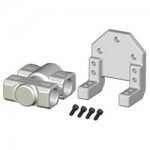So, my oil cooler works too efficiently and I'd like to have a shutoff valve. But is it that simple?
I currently have Earl's pancake oil thermostat (something like this: Earl's 502, Earl's Temp-A-Cure Oil Thermostats | Earl's).
However, I've heard that even when the oil is "cold," there is still a tiny flow of oil that is circulated to the oil cooler. This is to keep the oil in the oil cooler and lines somewhat warm and to prevent a big burst of cold oil entering the engine when the thermostat does finally open.
My problem is that even that little bit that is traveling through the cooler is too much and prevents the oil temperature gage from even registering a temperature while moving in 40 degree weather. While idling, the oil temp goes to normal (the fan even turns on), but when I start moving again, it goes right back down.
So, can I install a single valve in one of the oil cooler lines and shut it off during cold weather? My concern would be that when the thermostat opens when the oil temp gets high, the thermostat would not allow oil to bypass the cooler within the pancake. And, if the oil doesn't circulate within the pancake, and the valve going to the oil cooler is shut, then there wouldn't be any oil flow at all (or there would be severely restricted flow). I think we all know that wouldn't be a good situation.
I emailed the Earl people, and they didn't really give me an answer.
I guess the real question is: if the Earl thermostat is at temperature (i.e., allowing oil to go to the cooler), and the line going to the cooler is blocked, will I get any oil flow in the engine? If so, is the flow restricted at all?
Is there another solution to this problem? I'd like it to be simple to operate (like turning the handle of a single valve) and still allow a functional oil cooler.
I currently have Earl's pancake oil thermostat (something like this: Earl's 502, Earl's Temp-A-Cure Oil Thermostats | Earl's).
However, I've heard that even when the oil is "cold," there is still a tiny flow of oil that is circulated to the oil cooler. This is to keep the oil in the oil cooler and lines somewhat warm and to prevent a big burst of cold oil entering the engine when the thermostat does finally open.
My problem is that even that little bit that is traveling through the cooler is too much and prevents the oil temperature gage from even registering a temperature while moving in 40 degree weather. While idling, the oil temp goes to normal (the fan even turns on), but when I start moving again, it goes right back down.
So, can I install a single valve in one of the oil cooler lines and shut it off during cold weather? My concern would be that when the thermostat opens when the oil temp gets high, the thermostat would not allow oil to bypass the cooler within the pancake. And, if the oil doesn't circulate within the pancake, and the valve going to the oil cooler is shut, then there wouldn't be any oil flow at all (or there would be severely restricted flow). I think we all know that wouldn't be a good situation.
I emailed the Earl people, and they didn't really give me an answer.
I guess the real question is: if the Earl thermostat is at temperature (i.e., allowing oil to go to the cooler), and the line going to the cooler is blocked, will I get any oil flow in the engine? If so, is the flow restricted at all?
Is there another solution to this problem? I'd like it to be simple to operate (like turning the handle of a single valve) and still allow a functional oil cooler.






